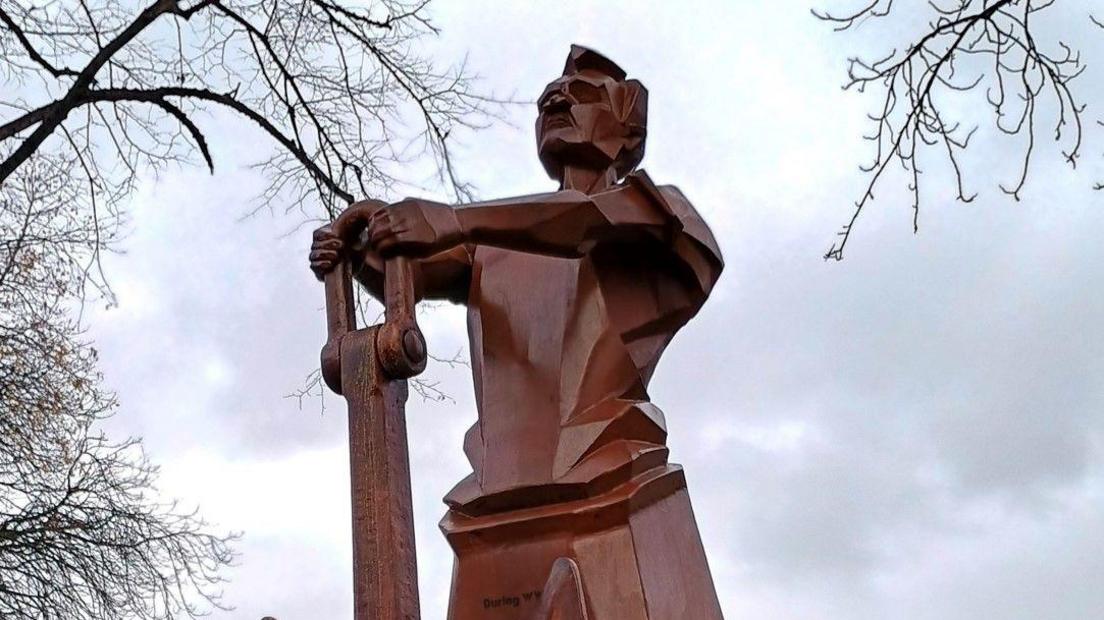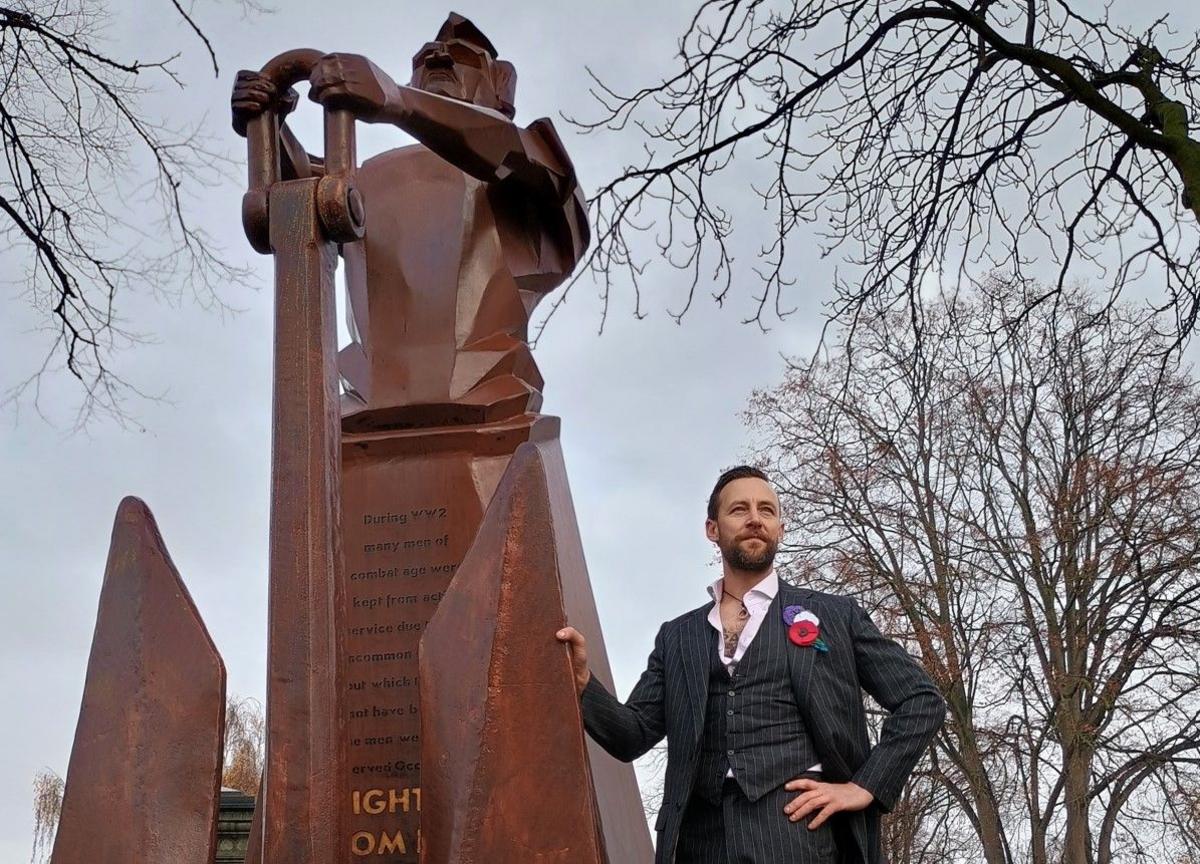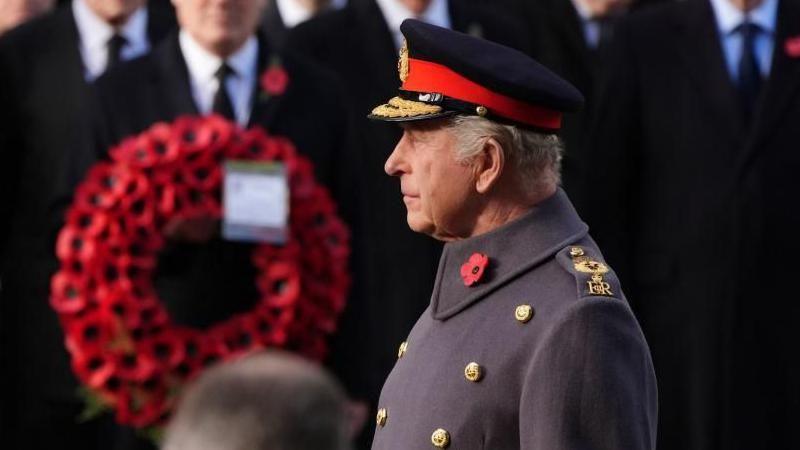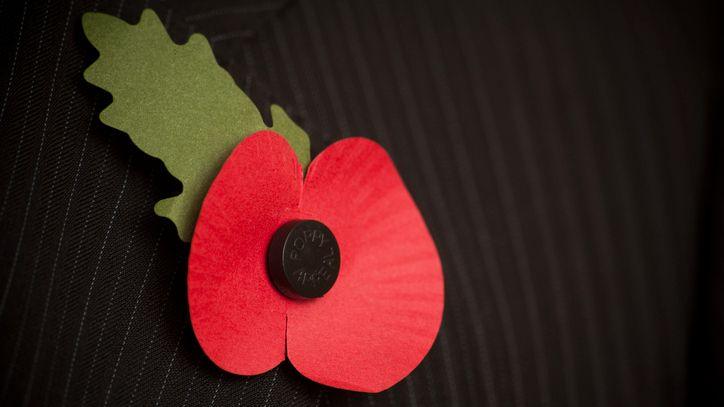Monument honours WW2 reserved occupation workers

The Fighting from Home monument was unveiled in Cradley Heath on Sunday
- Published
A 12ft (3.6m) -tall sculpture honouring Black Country workers who were in reserved occupations during World War Two has been unveiled.
Local people were invited to put forward names of family members who were in such roles to be added to the Fighting from Home monument, before its unveiling at St Luke's Churchyard, Cradley Heath.
Many jobs on the home front were known as "reserved occupations" and they were considered vital to the war effort.
Sculptor Luke Perry was inspired by his grandfather, chainmaker Eric Attwood, whose story was used to create the steel sculpture of a worker, accompanied by a real anchor for name engraving.
Mr Attwood was one of about five million men covered by the UK's Schedule of Reserved Occupations during World War Two, Sandwell Council said, ahead of the ceremony on Sunday.
The monument has been part funded by the Arts Council, together with the sculptor and his family's factory Solid Swivel in Cradley Heath, which donated time and materials.

Sculptor Luke Perry said it was something he had wanted to build for a decade
Mr Perry said the sculpture's features were based on his grandad "as he was quite a striking man".
He said it was something he had wanted to build for 10 years, as his relative "and many of his friends had been in reserved occupations" during the war.
"This monument is in memory of these uncelebrated men, many of whom suffered immensely from survivors' guilt and a real fear that they didn't play their part despite the importance of their work," he explained.

Mr Perry was inspired by his grandfather chainmaker Eric Attwood's story to create the steel sculpture
Council leader Kerrie Carmichael, had said it was "very fitting" the sculpture and anchor would be installed in Cradley Heath, because it is "close to where many men will have worked in reserved occupations alongside women during the war".
She said the authority was "rightly proud of our industrial heritage, the role our industries and everyone on the home front played in the war and of industries that continue to thrive in Sandwell today".
Carmichael said the monument would ensure stories and contributions to the war effort by those workers would be "remembered for generations to come".
The council has provided advice and support during the project.
Get in touch
Tell us which stories we should cover in Birmingham and the Black Country
Follow BBC Birmingham on BBC Sounds, Facebook, external, X, external and Instagram, external.
Related topics
- Published9 November

- Published9 November

- Published10 November 2024
